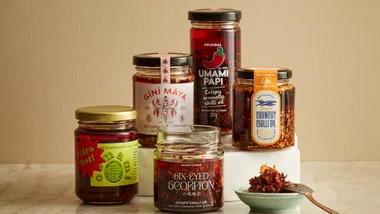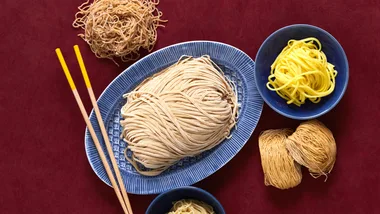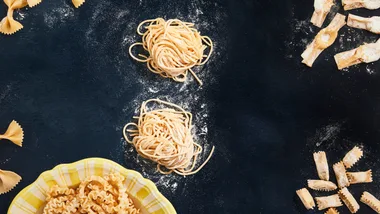What to plant this month
Cool/mountainous
Artichoke seedling
Asparagus seedling
Basil propagate
Beetroot sedd
Bok Choi/Pak Choi seedling
Carrot seed
Celery seedling
Coriander seedling
Fennel seedling
Herbs (all except basil) seedling
Kale seedling
Lettuce seedling
Parsnip seed
Peas seedling
Rocket seedling
Radish seed
Silverbeet seedling
Spinach seedling
Spring onion seedling
Tomato propagate
Turnip seed
Strawberry seedling
Swede seed
Temperate
Artichoke seedling
Asparagus seedling
Basil propagate
Beans propagate
Beetroot seed
Bok Choi/Pak Choi seedling
Carrot seed
Celery seedling
Coriander seedling
Cucumber seed
Fennel seedling
Herbs (all except basil) seedling
Kale seedling
Lettuce seedling
Parsnip seed
Peas seedling
Pumpkin seed
Rocket seedling
Radish seed
Silverbeet seedling
Spinach seedling
Spring onion seedling
Squash seed
Sweet Corn propagate
Tomato propagate
Turnip seed
Strawberry seedling
Zucchini seed
Sub tropical
Artichoke seedling
Asparagus seedling
Basil seedling
Beans seed
Beetroot seed
Bok Choi/Pak Choi seedling
Capsicum propagate
Carrot seed
Celery seedling
Chilli propagate
Coriander seedling
Cucumber seedling
Eggplant propagate
Herbs (all except basil) seedling
Kale seedling
Lettuce seedling
Rocket seedling
Radish seed
Peas seed
Pumpkin seedling
Silverbeet seedling
Spinach seedling
Spring onion seedling
Strawberry seedling
Squash seedling
Sweet corn seed
Tomato seedling
Zucchini seedling
Tropical
Basil seedling
Beans seedling
Beetroot seed
Bok Choi/Pak Choi seedling
Carrot seed
Capsicum seedling
Celery seedling
Chilli seedling
Cucumber seedling
Eggplant seedling
Herbs (all) seedling
Lettuce seedling
Pumpkin seedling
Rocket seedling
Radish seed
Silverbeet seedling
Spinach seedling
Spring onion seedling
Squash seedling
Strawberry seedling
Sweet Corn seedling
Tomato seedling
Zucchini seedling
Spring planting ups the anticipation of warmer weather, says Mat Pember, so start with cucumbers for salads, pickles and refreshing G&Ts.
September is the month when everything changes – wardrobes, ideology, even the pasty tone of your skin – and of course we rediscover our vegetable patches.
Spring planting is mental relief from winter. While it’ll still be some time until the hemisphere heats up properly, the idea of spring planting is enough to make us see the light at the end of the cold tunnel. And our featured produce this month, cucumber, makes that light shine a little brighter.
For me, cucumber is an essential component of any warm-season veggie patch. It’s just so versatile; you can throw it in salads, pickle it, pop it in a G&T or gnaw in hand straight off the vine. And it’s neither difficult nor tedious to grow. It’s a rigorous vine grower that loves water and nitrogen in infancy to develop a strong vine, and then water and potassium nearing maturity to help flower development and then fruit setting.
Start by preparing your soil with plenty of compost and chook manure pellets, and ensure the patch is free-draining. In anticipation of a healthy vine, construct a trellis for the vine to grasp and climb. We’ve found concrete reinforcing mesh is perfectly suited to the task.
Practise caution with any early spring planting when the weather can be erratic. Despite the fact that warmer weather is promised, September can throw up many a curve ball, so it’s best to anticipate and prepare for them. This will affect the way you prepare and plant your cucumbers.
When planting from seed it’s best to propagate in a more controlled environment – that is, in a seed tray that can be left outside during the day and kept safely indoors at night – and then transplanted once things heat up. Since plant life is dictated by soil temperature, you’re after a temperature of 18C and more, with a warm outlook. One way of accelerating the heating of the soil is to lay black plastic over the patch to absorb the radiation and send it down below (especially useful in colder parts of the country). Use a thermometer to ensure the soil is perfectly cooked for transplanting.
Once in the ground, water every day for the first few weeks and then cut back to two to three times a week as the vine begins to establish and the plant’s roots are geared for holding water.
Be diligent in routinely attaching the growing vine to your trellis. This keeps your precious real estate free for other plants that require it while also exposing the cucumber to more sunlight, and accelerating its growth. A simple win-win. To avoid clumsy damage, make sure to use soft twine that you tie securely to the trellis first, before loosely wrapping it around the vine.
In the right conditions you may be surprised at how rapidly the fruit begins to set, sometimes only four weeks after transplanting your seedling. To ensure that your cucumbers are perfectly formed they will appreciate extra watering as the fruit begins to set, but beware of overexposed fruit that sits on the vine for too long; it loses colour and flavour. Apply a hit of potassium in the form of liquid potash at the first sign of fruit – this will see the plant produce to its fullest potential.
Use sharp scissors when harvesting; otherwise cucumbers demand that you twist the fruit until your hand gets dizzy to break them free from the vine. Yanking at them will only result in collateral damage and slapping your forehead in frustration. Pick fruit in a timely manner – the plant only has a certain amount of energy, and freeing up the plant frees up energy to produce more cucumbers. And more G&Ts.
One-minute skills: good watering practices
Good watering practices foster healthy plants and keep pests and disease at bay. With the exception of very hot days (when you may need to water around the roots at midday), only water plants first thing in the morning so they can draw water throughout the day, when they need it most. A late-afternoon beer and water may go hand in hand, but not for your plants, which sit mostly idle at night. Watering them at that time will invite pests, which mostly invade at night and are attracted to moisture. Here are a few more tips to observe.
1 Water around the roots, where it’s used by plants. Watering foliage damages it and, on sunny days, can burn leaves destined for dinner.
2 The language of plants is easy to interpret. Underwatered plants will have dead or dying exterior leaves, while overwatered plants will have dead and diseased interior leaves.
3 Water young plants frequently in small amounts, then, as they mature, give them more water less often – simply put, think of an infant’s feeding pattern compared to a teenager’s.









